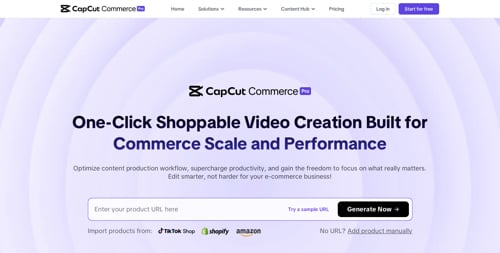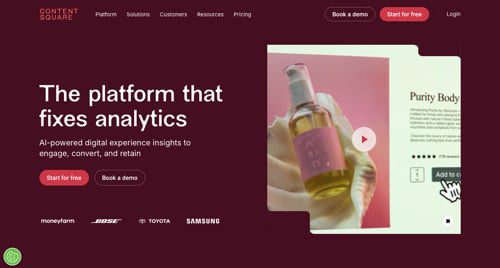Bad & Toxic Backlinks You Should Avoid via @sejournal, @BennyJamminS
Link building is a complicated art form with many different tactics and approaches.
Despite being one of the most mature processes in SEO, there’s still much disagreement about what makes a “bad” or “good” link building strategy, including effectiveness vs. risk, and what tactics Google can detect or punish a website for.
This post will help you determine what to avoid when link building or vetting the tactics of a new service provider.
I’m not going to claim to put any disagreements to rest, and if you’re a particularly experiment-minded SEO you might find this post a little on the conservative side.
As with all things in the industry, there’s inconsistency between what Google says and what works, and everyone benefits from those who experiment and push boundaries.
But I’m taking a conservative approach that follows Google’s guidelines closely for two core reasons:
- This post is for readers looking for reliable and sustainable strategies. I don’t advise that you use experimental or high-risk tactics when it comes to link building if you don’t already know what you’re doing and what the risks are.
- You should take the guidelines as a statement of intent, not absolute or current truth. Even if a link building tactic that goes against Google’s guidelines works now, there is reason to believe that Google intends to address it.
Types Of Unnatural Links
A an unnatural link is any link that is created for the purposes of manipulating search engines or that violates Google’s spam policies.
The following are some of the most common types of unnatural links.
Buying Or Selling Links
There is nothing fundamentally wrong with paying for a link or exchanging some kind of product or service for a link as long as the nature of the relationship is disclosed and the links are not for SEO purposes.
Buying, exchanging, or trading for links for SEO is the problem. Links for SEO are supposed to be a choice influenced only by the content on the page.
If your content is highly valued and people choose to link to it for that reason, then you deserve SEO benefits.
When you enter money or value exchanges into that dynamic, it breaks the ideal purpose of SEO links and introduces a high potential for manipulation. In such cases, Google requires marking the link as rel=nofollow or rel=sponsored so that the links do not pass SEO value. As long as you or the parties linking to you do this, for the most part, there’s no problem.
Here is an example of implementing nofollow and sponsored attributes:
Here are some ways that buying or selling links can fall afoul of Google’s spam policies:
- Text advertisements with links that pass SEO signals because they haven’t been identified with “nofollow” or “sponsored.”
- Paying for articles that include links that pass SEO signals.
Another way to buy links is to pay someone to create them for you. In this case, a service provider does that work of creating assets, reaching out to acquire links, or both. As long as this service provider doesn’t engage in shady tactics of their own and doesn’t give you links on domains that they own, this is totally fine.
Keep in mind that the “buying” and “selling” definitions are not limited to an exchange of currency.
It describes any kind of relationship where something is exchanged for a link, like a product.
As Matt Cutts explained in 2014, Google aligns pretty closely with the FTC on what it understands to be a “material connection” between a link provider and link recipient:
- If a party receives enough value to reasonably change their behavior, a material connection must be disclosed.
- A pen or a t-shirt likely won’t change behavior (unless received for the explicit purpose of reviewing / linking to it).
- A direct payment for a link, a gift card, or a product with a high dollar value likely changes behavior and incentivizes a link.
- An item loaned has different implications than an item given.
- Consider the intended audience: if you’re giving things away for reasons other than to acquire links (for example as part of a conference attendance gift package), then disclosure might be necessary, but it might not be strictly necessary to ask all those people to mark links as sponsored if they choose to talk about it.
- Consider whether a link relationship would be surprising: it makes sense that a movie reviewer might see a movie for free. It makes less sense that a tech reported would get to keep a laptop they’re reporting about without disclosure.
Link Exchange Agreements
Link exchanges are similar to buying links because they involve an exchange of value.
Mutual linking happens often, and when it occurs organically, it’s no problem. It makes perfect sense for some websites to link back and forth.
But you need to watch out for any kind of agreement. “Link for link” is a no-go, and if you do it often enough, it can become easy to spot.
The thing about links is that any time you give or get a link for a reason other than the value and relevance of the link itself, it’s easy to spot – likely easier than you think.
The occasional bit of back rubbing isn’t a big deal. When given a few different choices of websites to reference, it makes sense that people would choose those they already know or have existing relationships with.
That’s generally fine. The problem comes when you enter into specific agreements: You link to me, and I’ll link to you.
The video below explains the difference between a link that’s an editorial choice and a link that’s based on an agreement.
Private Blog Networks
Private blog networks (PBNs) are networks of sites created to artificially inflate the rankings of one specific central website.
Basically, one entity controls an entire network of websites and can use a few different specific linking methods to manipulate to pass authority and SEO value around.
This network can then be used to artificially inflate the rankings of other websites by linking out to them.
In order for this tactic to work, all the websites need to have relationships or be owned by the same entity.
This is a pretty clear violation of Google’s guidelines, and it’s also pretty easy to spot.
Sites that are part of these networks can be penalized, and if you’re a little too lax with user-generated content on your site, you could find yourself accidentally becoming one.
If you accept any kind of content from external parties, scrutinize it carefully, especially links. Skip down to “How To Spot Shady Links” to find out more.
Unnatural Links From Forums, Blog Comments, And Other User-Generated Content
User-generated content is tricky when it comes to links. Ideally, a random person loves your content so much that they use you as a reference. Not so ideal is faking it.
Comments, forums, blogs, guestbooks, and even sites like Reddit might be tempting sources for links, and in the right context, they can absolutely be part of a healthy backlink profile. You can even link to yourself if you’re genuinely engaging in a relevant discussion. Google doesn’t consider all comment links and UGC links to be spam.
However, it’s a bad idea to try and engineer these links as part of a mass strategy.
The first thing to keep in mind is that many user-generated content (UGC) websites have blanket nofollow attributes on outgoing links. It’s an old tactic, so many high-quality communities moderate UGC heavily. This means that doing this effectively requires effort. The big question to ask yourself is: does the comment add genuine value to the community?
Most commonly, people execute these links unnaturally using bots to post automatically. Generally, automated posting using bots isn’t exactly valuable, and you’ll be flagged and moderated out of those communities.
Automated Link Syndication
There are tons of ways to automate links, but Google considers automating links at scale to be spam.
There are plenty of ways to safely automate your content processes, but we aren’t talking about that. We’re talking about using automation to post content externally from your website purely to acquire SEO links.
From automated article spinners to bots that will post comments and social media posts, if you’re intentionally building links “at scale,” then the chances are high that you’re building toxic links.
This could look like an automated press release or directory posting. It could look like low-quality article directories, which are often filled with spammy content that is widely distributed.
Generative AI has enabled new forms of automation for links and content, so it’s important to consider the overall principles in Google’s and the FTC guidelines when you evaluate novel functions and strategies.
Links In Distributed Widgets
People sometimes engage in automated link building by adding links to widgets distributed to multiple websites. Google clarified its stance on this and provided examples of manipulative widgets.
This kind of link building is pretty easy to spot, and it’s pretty clear that these types of links don’t add value.
Using Expired Domains To Build Links
Expired domain abuse is another tactic Google is wise to, but that doesn’t stop people from trying it.
One way that expired domains can be used to build unnatural links is by purchasing it and then redirecting it to another website. The idea is that all of the authority and backlinks belonging to the expired domain will be forwarded through the redirect. Don’t do this.
Any Link Can Be Bad If It’s Lazy Enough
Does the automated press release spam mean you shouldn’t send press releases? No!
Does the prevalence of poor-quality directors mean you can’t use directories in a high-quality way? Also no!
This goes for many link building strategies. There’s usually a high-effort, valuable version and a low-effort, spammy version.
Take guest posting as an example.
If you’re an expert in your field and take the time to write useful content aligned with E-E-A-T best practices, that’s valuable.
If you want to reach new audiences, you could send that post to a website with a large reach. It makes sense for that website to then link back to you as a reference for readers if they like your writing and want to learn more.
This is an ideal linking relationship. A website has chosen your content because it provides value to its readers and links to you as the source of the expertise.
But when one party turns lazy, this becomes toxic.
A website might decide that, for whatever reason, it makes sense to start allowing poor-quality content with links.
Maybe it starts charging or uses a big catalog of content to build an affiliate strategy.
On the other side, link builders might generate poor-quality content with links and post it on websites that either don’t mind or don’t know better. Or they might try and sneak them by following stricter editorial guidelines.
When one side of the equation gets lazy, guest posting becomes a manipulative linking strategy.
The Risk Of Manual Actions
The most likely risk of an unnatural link is that it will be a waste of time and/or money.
If you build a link for SEO that goes against Google’s guidelines, algorithms will simply ignore it either immediately or at an unspecified time in the future when they discover it.
If you have many toxic links and you’re using a strategy that the algorithms don’t immediately catch, this can open you up to a sudden reduction in SEO effectiveness.
At some point, Google will likely release an update that improves how the algorithms detect the links.
When that happens, if you have many of them, the adjustment can significantly impact your rankings and traffic. This can look like a targeted penalty, but generally, it isn’t.
Google uses automated systems and manual actions to punish toxic and spammy link building, but generally, you’re safe from this action unless you’re intentionally using these tactics on a large scale.
On the other hand, you can receive specific penalties for unnatural links, both coming to your site or going out from your site.
 Unnatural links manual action notification in search console.
Unnatural links manual action notification in search console.Links To Your Site Vs. Links From Your Site
If you host unnatural links from your site to other sites, you may be hit with a manual action. This indicates to Google that you’re on the supply side of the ecosystem it’s trying to stop.
A large number of unnatural links coming from your website could cause Google to decide it doesn’t trust you and issue a penalty. This will be communicated to you in Google Search Console. These penalties can be reversed, but generally this requires you to fix the problems and submit a request for reevaluation.
This video from Google about unnatural links from your site explains more. It’s your responsibility to ensure that your site does not host unnatural links. This video from Google provides a great overview. Remember: “A natural link is an editorial choice.”
For example, if you use your domains to host bad link tactics and sell links to others, you’re at a high risk of receiving a manual penalty from Google that suppresses or removes your website from the Search index.
You can also receive a manual penalty for unnatural links to your website. This seems less likely, because there are many cases where it wouldn’t be fair to punish a website for incoming links. However, you might still receive a manual penalty if Google is confident that you are trying to manipulate your ranking.
This video from Google about unnatural links to your site has more information.
How To Spot Shady Links
A good link is a genuine interaction of trust between two parties.
Spotting shady links is actually pretty easy, especially when there’s a pattern.
If you’re auditing your backlink profile or putting a potential service provider through their paces, here are some signs to look for.
1. New or young sites on blogging domains.
If you notice links from blogging subdomains ( e.g. blogger.com ) to your website, especially if they aren’t directly relevant, appear in high numbers (without nofollow attribute), or even in some cases where the blog has your website or brand name, this is a sign that someone was building shady links to your website.
This is a good indication of a PBN.
You should ask a link building service provider whether they create new websites to build links. This is a red flag.
2. Many unnatural links from unrelated forums.
Links like this can indicate automated link building with bots. Generally, using UGC sites to build links is against the terms of service of those websites.
Usually, the strategy involves pretending to be a genuine user. If you have to pretend you’re someone you’re not, it’s a shady link.
3. Links from irrelevant websites and directories.
Relevance really does matter with links, and if you’re looking through a link profile and see domains that just don’t make sense, they bear investigation. For example if you are a recipe publisher a link from plumber’s article is highly irrelevant. That means it was likely the result of an unnatural link building technique.
However, if you add your website to relevant directories that have value from the users’ perspective, this can be totally fine. For example, you should add your restaurant website to Yelp, which is used by 32M active users who look for reviews before booking a reservation. Check our list of directories that still matter.
If you want to learn more about link building and its many pitfalls, check out SEJ’s ebook The Dark Side Of Link Building.
More resources:
Featured Image: Jakub Krechowicz/Shutterstock





